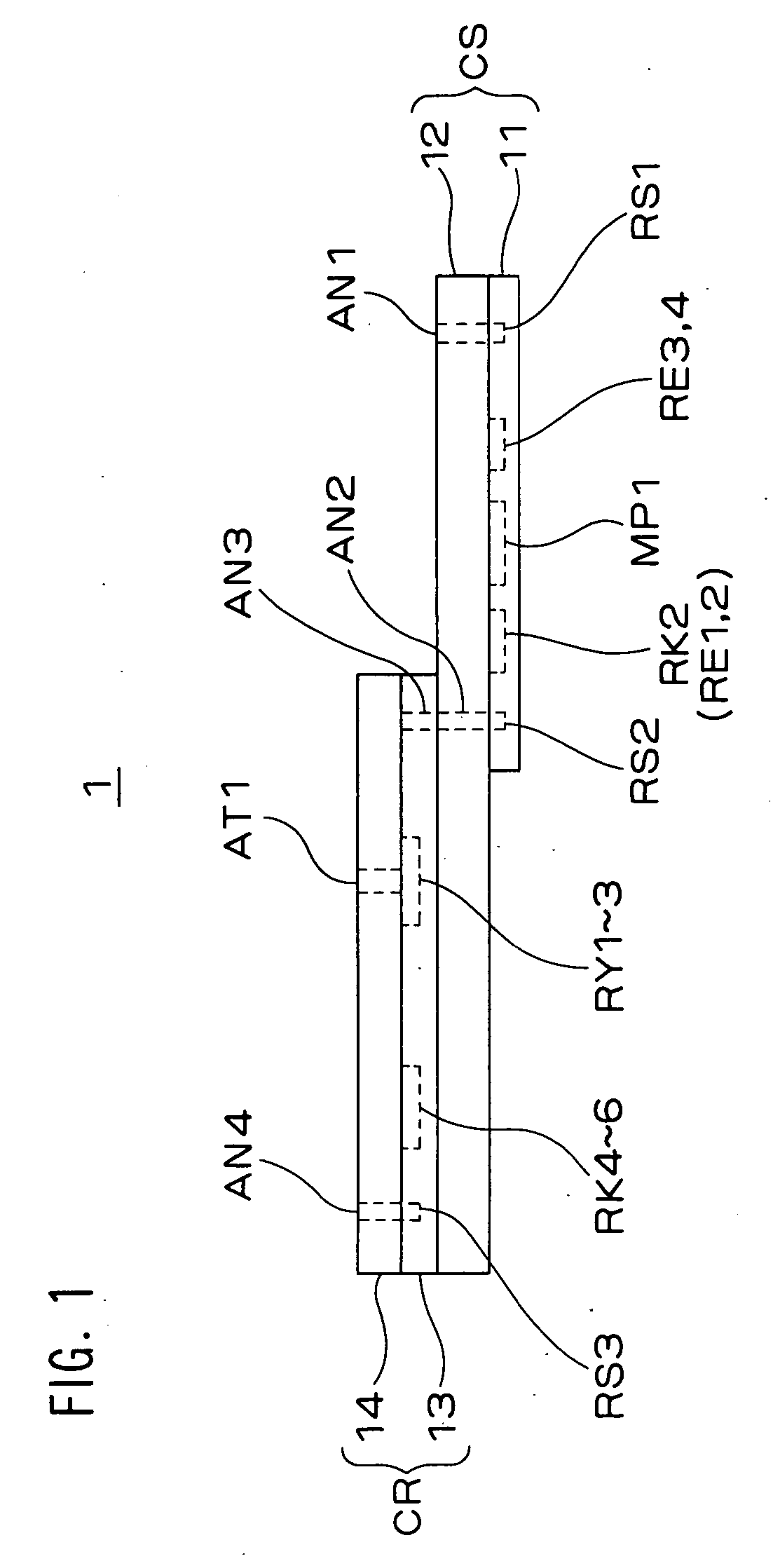Microfluidic device, method for testing reagent and system for testing reagent
- Summary
- Abstract
- Description
- Claims
- Application Information
AI Technical Summary
Benefits of technology
Problems solved by technology
Method used
Image
Examples
first embodiment
[0043]FIG. 1 is a front view of a microfluidic device 1 according to a first embodiment of the present invention, FIG. 2 is an exploded perspective view of a structure of the microfluidic device 1, FIG. 3 is a plan view of a micropump MP1 shown in FIG. 2, FIG. 4 is a front sectional view of the micropump MP1, FIGS. 5A-5H show an example of a manufacturing process of the micropump MP1, FIGS. 6A and 6B as well as FIGS. 7A and 7B show examples of waveforms of a drive voltage of a piezoelectric element.
[0044] Referring to FIGS. 1 and 2, the microfluidic device 1 includes two chips removably attached to each other. One of the two chips is a chip CS for liquid transport on which the micropump MP1 is mounted, while the other is a chip CR for process into which a reagent (a specimen liquid) is injected for a PCR reaction.
[0045] The liquid transport chip CS includes a pump chip 11 and a glass substrate 12.
[0046] The pump chip 11 has a structure in which the micropump MP1, liquid chambers ...
second embodiment
[0116] In the foregoing first embodiment, the three process chambers RY1-RY3 are individually provided corresponding to the three heating portions KN1-KN3 that are separately provided. In a second embodiment, however, a structure is adopted in which a plurality of temperature areas is provided in one chamber having a constant sectional area.
[0117]FIG. 13 is a diagram showing a structure of a microfluidic device 1B according to the second embodiment of the present invention, mainly by a connection state of chambers therein.
[0118] As shown in FIG. 13, one process chamber RY11 is provided with extending over three heating portions KN1-KN3. Three chambers Y1-Y3 are provided inside the process chamber RY11. The chambers Y1-Y3 are provided at portions corresponding to the heating portions KN1-KN3, respectively. When being heated, the three chambers Y1-Y3 function as temperature areas of the heating portions KN1-KN3, respectively. Each of the three chambers Y1-Y3 has a volume greater tha...
third embodiment
[0122] In the foregoing first and second embodiments, an end portion of the channel RR1 provided in the micropump MP1 side, i.e., the connection chamber RS1 is completely independent of an end portion of the channel RR16 provided in the process chambers RY side, i.e., the connection chamber RS3. In short, the connection chamber RS1 is not in communication with the connection chamber RS3 in the first and second embodiments. Instead, in a third embodiment, a structure is adopted in which the both end portions are in communication with each other and all the channels RR form one closed loop.
[0123]FIG. 14 is a diagram showing a structure of a microfluidic device 1C according to the third embodiment of the present invention, mainly by a connection state of chambers therein.
[0124] As shown in FIG. 14, the microfluidic device 1C includes a liquid transport chip CSC and a process chip CRC.
[0125] The liquid transport chip CSC includes two micropumps MP1-MP2, a liquid chamber RE12, a gas c...
PUM
 Login to View More
Login to View More Abstract
Description
Claims
Application Information
 Login to View More
Login to View More - R&D
- Intellectual Property
- Life Sciences
- Materials
- Tech Scout
- Unparalleled Data Quality
- Higher Quality Content
- 60% Fewer Hallucinations
Browse by: Latest US Patents, China's latest patents, Technical Efficacy Thesaurus, Application Domain, Technology Topic, Popular Technical Reports.
© 2025 PatSnap. All rights reserved.Legal|Privacy policy|Modern Slavery Act Transparency Statement|Sitemap|About US| Contact US: help@patsnap.com



